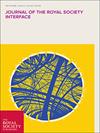Drag reduction and locomotory power in dolphins: Gray's paradox revealed.
IF 3.5
2区 综合性期刊
Q1 MULTIDISCIPLINARY SCIENCES
引用次数: 0
Abstract
For 88 years, biologists and engineers have sought to understand the hydrodynamics enabling dolphins to swim at speeds seemingly beyond their energetic capabilities, a phenomenon known as Gray's paradox. Hydromechanical models calculating the drag of swimming dolphins estimated power requirements for sustained high-speed swimming, which were physiologically impossible. Using an uncrewed aerial vehicle, we calculated the total power of free-ranging dusky dolphins (Lagenorhynchus obscurus) at speeds from 0.9 to 6.9 m s-1, deriving drag coefficients (Cd) and drag. Our results showed that the Cd decreased exponentially with speed, reducing drag by up to 89% at speeds >2 m s-1, with an additional 17% reduction during porpoising (>4.0 m s-1). At 6.9 m s-1, drag was 32 N, with a power of 15.8 W kg-1, nearly identical to the mass-specific allometric prediction for the maximum aerobic capacity of other mammals and physiologically possible. The Cd at speeds >2.5 m s-1 indicated reduced turbulence in the boundary layer around the dolphin's body, thereby reducing drag. The ability of dusky dolphins to swim at sustained high speeds resulted from an exponential decrease in Cd, which was further reduced by porpoising, thereby explaining the low drag and locomotory power that resolved Gray's paradox.海豚的阻力减小和运动能力:格雷悖论的揭示
88 年来,生物学家和工程师一直试图了解使海豚能够以看似超出其能量能力的速度游泳的流体力学,这种现象被称为格雷悖论。计算海豚游动阻力的水力学模型估计了持续高速游动所需的动力,而这在生理上是不可能的。我们利用无人驾驶飞行器,计算了自由活动的暗色海豚(Lagenorhynchus obscurus)在 0.9 至 6.9 米/秒速度下的总功率,得出了阻力系数(Cd)和阻力。我们的结果表明,Cd 随速度呈指数下降,速度大于 2 米/秒时,阻力最多可减少 89%,而在海豚游动时(大于 4.0 米/秒),阻力还可减少 17%。在 6.9 m s-1 时,阻力为 32 N,功率为 15.8 W kg-1,几乎与其他哺乳动物最大有氧能力的特定质量异速预测值相同,在生理学上是可能的。速度大于 2.5 米/秒时的 Cd 表明海豚身体周围边界层的湍流减少,从而降低了阻力。暗色海豚以持续高速游泳的能力来自于 Cd 的指数式下降,而这种下降又因海豚的游动而进一步减少,从而解释了低阻力和解决格雷悖论的运动能力。
本文章由计算机程序翻译,如有差异,请以英文原文为准。
求助全文
约1分钟内获得全文
求助全文
来源期刊

Journal of The Royal Society Interface
综合性期刊-综合性期刊
CiteScore
7.10
自引率
2.60%
发文量
234
审稿时长
2.5 months
期刊介绍:
J. R. Soc. Interface welcomes articles of high quality research at the interface of the physical and life sciences. It provides a high-quality forum to publish rapidly and interact across this boundary in two main ways: J. R. Soc. Interface publishes research applying chemistry, engineering, materials science, mathematics and physics to the biological and medical sciences; it also highlights discoveries in the life sciences of relevance to the physical sciences. Both sides of the interface are considered equally and it is one of the only journals to cover this exciting new territory. J. R. Soc. Interface welcomes contributions on a diverse range of topics, including but not limited to; biocomplexity, bioengineering, bioinformatics, biomaterials, biomechanics, bionanoscience, biophysics, chemical biology, computer science (as applied to the life sciences), medical physics, synthetic biology, systems biology, theoretical biology and tissue engineering.
 求助内容:
求助内容: 应助结果提醒方式:
应助结果提醒方式:


